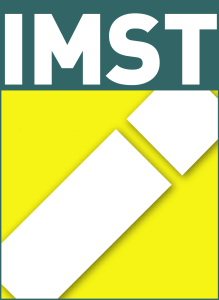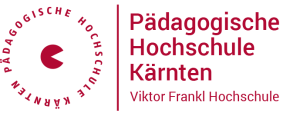Weiterführende Literatur
Amon, H., Bartosch, I., Fietz, H., Müllner, B. & Wenzl, I. (2021). MINT-Schwerpunkte in der Sekundarstufe 1: Unter Berücksichtigung von Gender & Diversität. Eine Synthese internationaler Good-Practice-Beispiele.
Bundesministerium für Bildung, Wissenschaft und Forschung. (2022). Lehrplan der Mathematik – Informatik – Naturwissenschaften -Technik Mittelschule (Kurzform MINT-MS) (im Schulversuch). Bundesministerium für Bildung, Wissenschaft und Forschung.
Czerniak, C. M., Weber, W. B., Sandmann, A. & Ahern, J. (1999). A Literature Review of Science and Mathematics Integration. School Science and Mathematics, 99(8), 421–430. https://doi.org/10.1111/j.1949-8594.1999.tb17504.x
Eder, F. & Bergmann, C. (2005). Allgemeiner Interessen-Struktur-Test mit Umwelt-Struktur-Test (UST-R) – Revision: Manual. Hogrefe.
Furner, J. M. & Kumar, D. D. (2007). The Mathematics and Science Integration Argument: A Stand for Teacher Education. Eurasia Journal of Mathematics, Science and Technology Education, 3(3). https://doi.org/10.12973/ejmste/75397
Helmke, A. (2017). Unterrichtsqualität und Lehrerprofessionalität: Diagnose, Evaluation und Verbesserung des Unterrichts (7. Aufl.). Unterricht verbessern – Schule entwickeln. Klett Kallmeyer.
Jentsch, A., Schlesinger, L., Heinrichs, H., Kaiser, G., König, J. & Blömeke, S. (2020). Erfassung der fachspezifischen Qualität von Mathematikunterricht: Faktorenstruktur und Zusammenhänge zur professionellen Kompetenz von Mathematiklehrpersonen. Journal für Mathematik-Didaktik. Vorab-Onlinepublikation. https://doi.org/10.1007/s13138-020-00168-x
Klieme, E., Lipowsky, F., Rakoczy, K. & Ratzka, N. (2006). Qualitätsdimensionen und Wirksamkeit von Mathematikunterricht: Theoretische Grundlagen und ausgewählte Ergebnisse des Projektes “Pythagoras”. In M. Prenzel & L. Allolio-Näcke (Hrsg.), Untersuchungen zur Bildungsqualität von Schule: Abschlussbericht des DFG-Schwerpunktprogramms (S. 127–146). Waxmann.
Krainer, K. (2019). Wissenstransfer, Implementation und Verbreitung von Innovationen. Erfahrungen aus der Initiative “Innovationen Machen Schulen Top”. Die Deutsche Schule(3), 326–330. https://doi.org/10.25656/01:20601
Krapp, A. (1999). Intrinsische Lernmotivation und Interesse: Forschungsansätze und konzeptuelle Überlegungen. Zeitschrift für Pädagogik, 45(3), 387–406. https://doi.org/10.25656/01:5958
Kunter, M., Baumert, J., Blum, W., Klusmann, U., Krauss, S. & Neubrand, M. (Hrsg.). (2011). Professionelle Kompetenz von Lehrkräften: Ergebnisse des Forschungsprogramms COACTIV. Waxmann.
Lindmeier, A. & Heinze, A. (2020). Die fachdidaktische Perspektive in der Unterrichtsqualitätsforschung: (bisher) ignoriert, implizit enthalten oder nicht relevant? Zeitschrift für Pädagogik – Beiheft 66, 255–268.
Müller, F. H., Krainer, K. & Haidinger, W. (2013). „MINT2020“ – Der Unterricht von morgen: Eine Initiative der Industriellenvereinigung und des Instituts für Unterrichts- und Schulentwicklung an der School of Education der Alpen-Adria-Universität Klagenfurt. Industriellen Vereinigung. chrome-extension://efaidnbmnnnibpcajpcglclefindmkaj/https://www.mintschule.at/wp-content/uploads/2016/08/MINT2020_Der_Unterricht_von_morgen.pdf
Mustafa, N., Ismail, Z., Tasir, Z. & Mohamad Said, M. N. H. (2016). A Meta-Analysis on Effective Strategies for Integrated STEM Education. Advanced Science Letters, 22(12), 4225–4228. https://doi.org/10.1166/asl.2016.8111
National Academy of Engineering and National Research Council. (2014). STEM Integration in K-12 Education: Status, Prospects, and an Agenda for Research. The National Academies Pres.
Ryan, R. M. & Deci, E. L. (2018). Self-determination theory: Basic psychological needs in motivation, development, and wellness (Paperback edition). The Guilford Press.
Seidel, T., Reinhold, S., Holzberger, D., Mok, S. Y., Schiepe-Tiska, A. & Reiss, K. (2016). Wie gelingen MINT-Schulen? Anregungen aus Forschung und Praxis [1. Auflage]. Waxmann.
Spreitzer, C., Hafner, S., Krainer, K. & Vohns, A. (2022). Effects of Generic and Subject-Didactic Teaching Characteristics on Student Performance in Mathematics in Secondary School: A Scoping Review. European Journal of Educational Research, 11(2), 711–737. https://doi.org/10.12973/eu-jer.11.2.711
Thibaut, L., Ceuppens, S., Loof, H. de, Meester, J. de, Goovaerts, L., Struyf, A., Boeve-de Pauw, J., Dehaene, W., Deprez, J., Cock, M. de, Hellinckx, L., Knipprath, H., Langie, G., Struyven, K., van de Velde, D., van Petegem, P. & Depaepe, F. (2018). Integrated STEM Education: A Systematic Review of Instructional Practices in Secondary Education. European Journal of STEM Education, 3(1). https://doi.org/10.20897/ejsteme/85525
Thibaut, L., Knipprath, H., Dehaene, W. & Depaepe, F. (2018). The influence of teachers’ attitudes and school context on instructional practices in integrated STEM education. Teaching and Teacher Education, 71, 190–205. https://doi.org/10.1016/j.tate.2017.12.014
Thomas, A. E. & Müller, F. H. (2016). Entwicklung und Validierung der Skalen zur motivationalen Regulation beim Lernen. Diagnostica, 62(2), 74–84. https://doi.org/10.1026/0012-1924/a000137
Tytler, R. (2020). STEM Education for the Twenty-First Century. In J. Anderson & Y. Li (Hrsg.), Advances in STEM Education. Integrated Approaches to STEM Education (S. 21–43). Springer International Publishing. https://doi.org/10.1007/978-3-030-52229-2_3
Wang, H.‑H., Moore, T. J., Roehrig, G. H. & Park, M. S. (2011). STEM Integration: Teacher Perceptions and Practice. Journal of Pre-College Engineering Education Research, 1(2), 1–13. https://doi.org/10.5703/1288284314636
Weinert, F. E., Schrader, F.‑W. & Helmke, A. (1989). Quality of instruction and achievement outcomes. International Journal of Educational Research, 13(8), 895–914. https://doi.org/10.1016/0883-0355(89)90072-4



